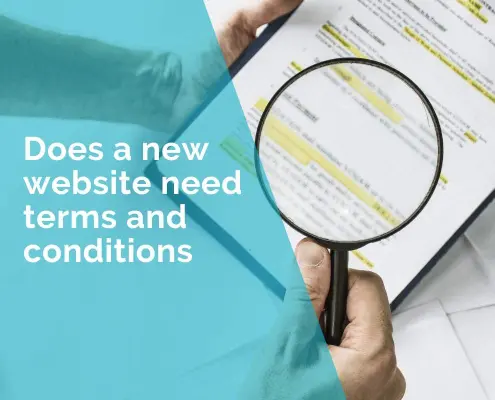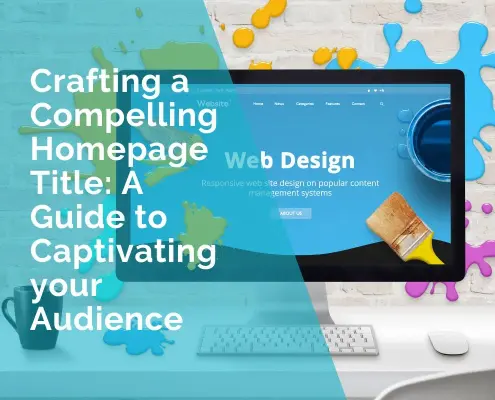Importance of creating quality content
The internet is saturated with vast amounts of content, making it challenging to capture the attention of your target audience. Creating quality content is crucial to stand out from the competition and build a loyal audience.
Here are some reasons why creating quality content is important:
Build Trust and Credibility
Quality content that provides value and solves problems for your audience helps to build trust and credibility. When your audience finds your content informative and helpful, they are more likely to view you as an authority in your industry, increasing their trust in your brand.
Keep up with trends and changes
The digital landscape is constantly evolving, and what was popular and effective a few years ago may not be as effective today. Rewriting website content allows you to update your website to keep up with trends and changes in your industry, audience preferences, and search engine algorithms.
Improve user experience
Website visitors expect high-quality content that is easy to read, engaging, and relevant to their needs. Rewriting website content helps to improve the user experience by making the content more readable, understandable, and actionable.
Boost search engine rankings
Search engines like Google reward websites that provide high-quality, relevant, and up-to-date content with higher rankings in search results. By rewriting website content and incorporating targeted keywords, you can improve your website’s search engine rankings and visibility, which can lead to more traffic and conversions.
Communicate a clear message
Clear communication is critical for effective marketing, and website content is the primary way to communicate your brand message to your target audience. By rewriting website content, you can ensure that your message is clear, concise, and compelling, which can lead to more engagement and conversions.
Drive Engagement and Conversions
High-quality content that resonates with your audience can help to drive engagement and conversions. When your audience finds your content valuable, they are more likely to share it with their peers, increasing your reach and exposure. Quality content can also persuade potential customers to take action, such as making a purchase or signing up for a newsletter.
Build Brand Awareness and Loyalty
Creating quality content that aligns with your brand values and messaging helps to build brand awareness and loyalty. Quality content that resonates with your audience can help to differentiate your brand from competitors and establish a loyal following.
Establish Thought Leadership
Quality content that provides insights and thought-provoking perspectives can help to establish thought leadership in your industry. When your audience sees you as an expert in your field, they are more likely to seek out your content and follow your brand.
How the website’s purpose affects the content
The website’s purpose affects the content strategy by influencing the tone, style, and structure of the website’s pages.
Here are different types of websites and their purpose:
E-commerce websites
The primary purpose of e-commerce websites is to sell products online. Examples include Amazon, eBay, and Shopify.
Service-based websites
The purpose of service-based websites is to promote and sell services. Examples include lawyers, tradies, accountants, business coaches and consultants.
Blogging websites
The purpose of blogging websites is to share content and opinions on a particular topic or niche. Examples include Medium, WordPress, and Blogger.
News websites
The purpose of news websites is to provide up-to-date news and information on a variety of topics. Examples include CNN, BBC, and New York Times.
Educational websites
The purpose of educational websites is to provide information and resources for learning. Examples include Khan Academy, Coursera, and edX.
Nonprofit websites
The purpose of nonprofit websites is to promote a cause and encourage donations. Examples include Red Cross, UNICEF, and World Wildlife Fund.
Personal websites
The purpose of personal online presence is to showcase an individual’s work, skills, and achievements. Examples include portfolios for artists, writers, and photographers.
This difference in purpose will impact the type of content that is created and how it is presented.
Tips on how to identify the website’s purpose
To identify a website’s purpose, it’s essential to consider the following questions:
- What is the main objective of the website?
- Who is the target audience?
- What products or services are being offered?
- What value is being provided to visitors?
- What is the desired outcome for visitors?
For example:
A coaching website that specializes in career coaching.
What is the main objective of the website?
The main objective of the website is to provide career coaching services to clients who want to improve their career prospects, explore new opportunities, or make a career transition.
Who is the target audience?
The target audience for this website is professionals, recent graduates, and job seekers who are looking to enhance their careers and achieve their goals.
What products or services are being offered?
The website offers one-on-one coaching sessions, career assessments, resume and cover letter reviews, job search strategies, and interview preparation.
What value is being provided to visitors?
The website provides visitors with expert guidance, personalized support, and practical tools to help them achieve their career objectives. The value proposition is to help clients identify their strengths, passions, and career goals, and to provide them with the resources and knowledge they need to succeed.
What is the desired outcome for visitors?
The desired outcome for visitors is to feel more confident and empowered in their careers and to achieve their desired outcomes, whether it be a promotion, a new job, or a fulfilling career change. The website aims to build long-term relationships with clients and help them achieve their goals over time.
How to tailor the content to the website’s purpose
Once the website’s purpose has been identified, it’s crucial to tailor the content to that purpose. Here are some tips on how to do this:
Use the appropriate tone and style.
A website that sells luxury products will use a different tone and style than a website that provides information on a health issue.
For example
Tone and Style for a Luxury Website
When writing for a luxury website, the tone should be sophisticated, elegant, and refined. The style should be polished, exclusive, and high-end. Here is an example:
“Experience the epitome of luxury with our exclusive collection of high-end fashion, jewellery, and accessories. Each piece is crafted with the finest materials and the utmost attention to detail, ensuring that every item is a true masterpiece. From timeless classics to cutting-edge designs, our collection is curated to cater to the most discerning tastes. Indulge in the luxury you deserve and elevate your style to the next level.”
Tone and Style for a Health-Related Website
When writing for a health-related website, the tone should be informative, empathetic, and supportive. The style should be clear, concise, and easy to understand. Here is an example:
“Take charge of your health and well-being with our comprehensive range of resources and services. Our team of experts is dedicated to providing you with the information, tools, and support you need to make informed decisions about your health. Whether you’re looking to improve your fitness, manage a chronic condition, or simply stay healthy, we’re here to help. With our evidence-based approach and personalized care, you can trust us to support you every step of the way.”
Highlight the unique selling proposition.
The content should clearly highlight the unique selling proposition of the website.
For example
Unique Selling Proposition for a Coffee Shop
“Our coffee shop is not just a place to grab a cup of coffee; it’s an experience. We use only the finest, locally-sourced beans and roast them to perfection to deliver a rich, full-bodied flavour that will tantalize your taste buds. Our baristas are passionate about crafting the perfect cup of coffee and will take the time to get to know your preferences and make recommendations just for you. Whether you’re looking for a quick caffeine fix or a place to unwind with friends, our coffee shop is the perfect destination.”
Unique Selling Proposition for an E-commerce Store
“Shopping online can be overwhelming, but we make it easy. Our e-commerce store is your one-stop shop for high-quality, affordable products that you won’t find anywhere else. We scour the globe to bring you unique and innovative products that you’ll love. From the latest gadgets to the trendiest fashion, we’ve got you covered. And with our easy-to-use website and lightning-fast shipping, you can enjoy a hassle-free shopping experience from the comfort of your own home.”
Use visuals that support the purpose.
The visuals used on the website should support the purpose of the website.
For example
Visuals for an Educational Website
If the purpose of an educational website is to teach children about science, using visuals like videos, animations, and infographics can help to engage and educate children in a more interactive way.
For example, a website that teaches children about the solar system can use 3D animations to show the movement of planets, or use infographics to illustrate the size and distance between planets.
Visuals for a Food Delivery Service
If the purpose of a food delivery service is to entice customers to order food, using visuals like high-quality photographs of the food can help to make the food look more appetizing and encourage customers to order.
For example, a food delivery service can use professionally-taken photographs of their dishes, showing the colours and textures of the food in a way that makes it look delicious and tempting. They can also use videos of chefs preparing the food to add a personal touch and make the food feel more authentic.
Keep the content concise and clear.
The content should be concise and easy to understand. Visitors should be able to quickly identify the website’s purpose and the value being provided.
Examples from Different Industries:
E-commerce
The purpose of an e-commerce website is to sell products. The content should focus on highlighting the products and their features and benefits. For example, a clothing retailer’s website should have high-quality product images, detailed descriptions, and customer reviews to help visitors make informed purchasing decisions.
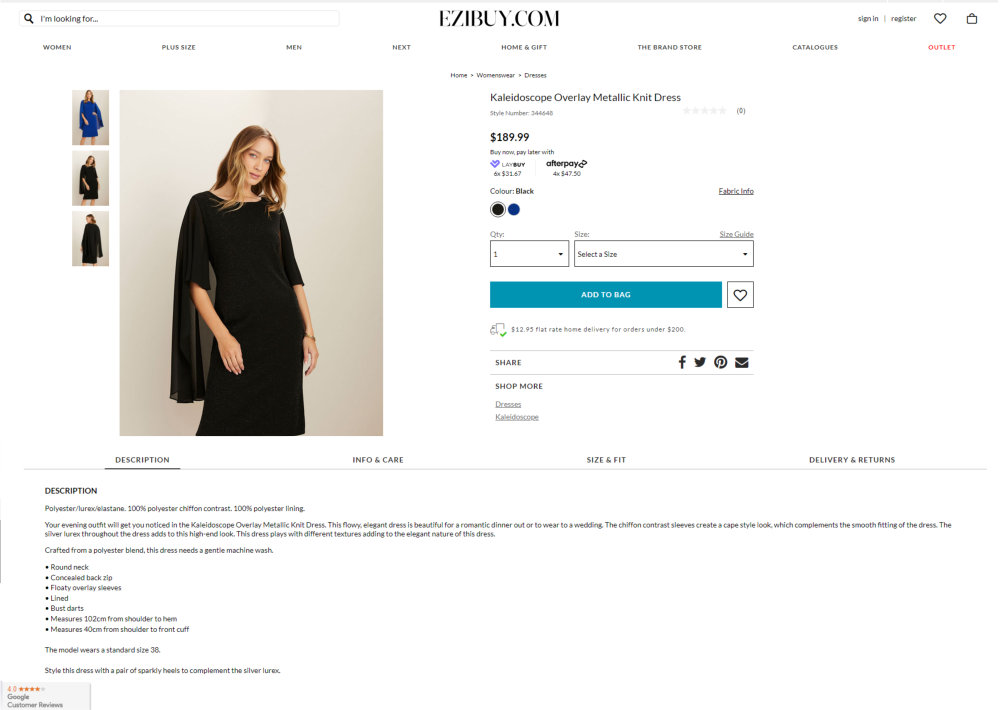
Healthcare
The purpose of a healthcare website is to provide information on health issues and services. The content should be informative, accurate, and easy to understand. For example, a hospital’s website should provide information on the medical services offered, medical staff, and insurance options.
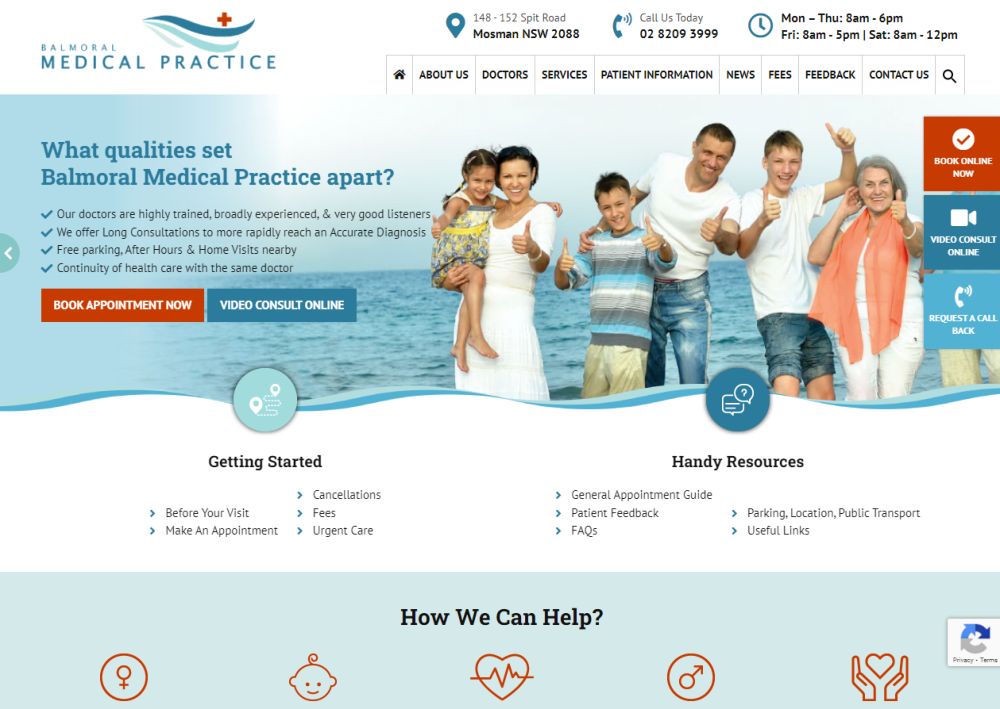
News
The purpose of a news website is to provide up-to-date news and information. The content should be timely, relevant, and well-researched. For example, a news website covering sports should provide scores, highlights, and analysis of recent games and events.
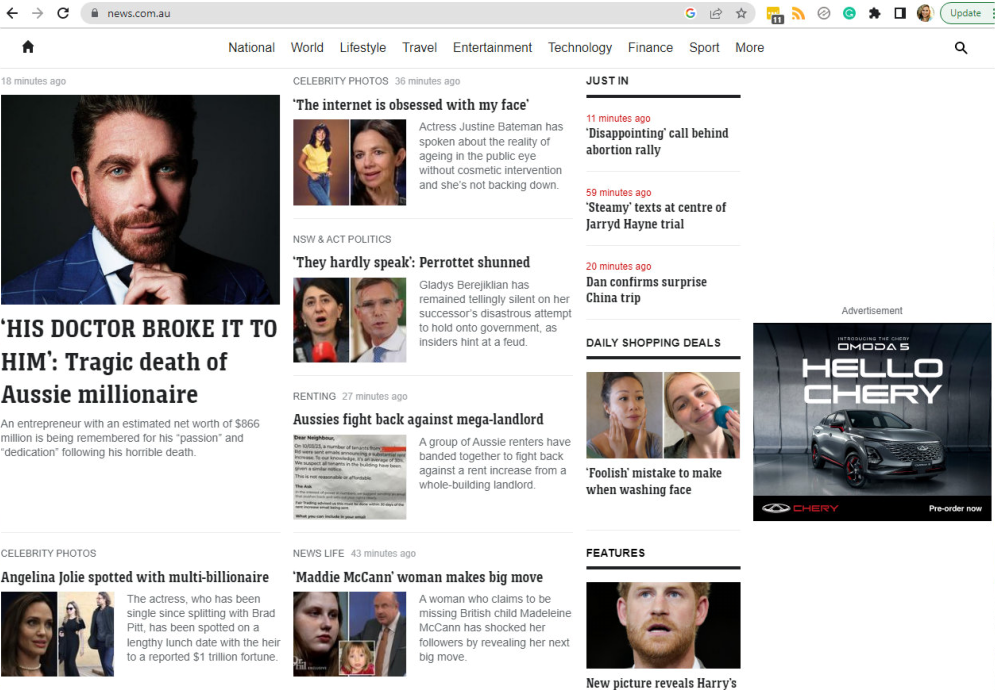
Know Your Target Audience
Importance of Knowing Your Target Audience
Knowing the target audience is critical for creating content that resonates with them. By understanding the target audience’s needs, preferences, and behaviours, businesses and organizations can create a website that provides value and encourages engagement. This, in turn, can lead to increased brand loyalty, higher conversion rates, and improved business outcomes.
How to Identify Your Target Audience
To identify the target audience, businesses and organizations should consider the following:
Demographics: Age, gender, education, income, and location are some of the key demographic factors that can help identify the target audience.
Psychographics: Psychographic factors such as values, interests, attitudes, and lifestyle can also provide insights into the target audience’s behaviour and preferences.
Analytics: Website analytics can provide valuable data on visitor behaviour, such as the pages they visit, the time spent on the website, and the devices they use.
Customer feedback: Gathering feedback from existing customers can also provide insights into the target audience’s preferences and needs.
Use the SEMRush Persona tool to help you answer all the important questions about your target audience.
Ways to Tailor the Content to the Target Audience
Once the target audience has been identified, it’s crucial to tailor the website’s content to meet their needs and preferences. Here are some tips on how to do this:
Use language that resonates with the target audience. The language used should reflect the target audience’s preferences and values. For example, a website targeting millennials may use informal language and popular cultural references.
Highlight the benefits of the products or services. The content should clearly highlight the benefits of the products or services being offered, and how they can meet the target audience’s needs.
Use visuals that appeal to the target audience. The visuals used should reflect the target audience’s preferences and interests. For example, a website targeting young families may use images of happy families enjoying time together.
Make the website easy to use. The website’s design and functionality should be tailored to the target audience’s preferences and needs. For example, a website targeting older adults may use larger fonts and simpler navigation.
Examples from Different Industries:
Travel:
The target audience for a travel website may vary depending on the type of travel being offered. For example, a luxury travel website may target high-income individuals, while a backpacker travel website may target budget-conscious travelers. The content should reflect the target audience’s preferences and needs, such as showcasing luxury accommodations or budget-friendly travel tips.
Technology:
The target audience for a technology website may vary depending on the product or service being offered. For example, a website selling gaming laptops may target young adults, while a website offering cybersecurity services may target businesses. The content should reflect the target audience’s preferences and needs, such as showcasing the latest gaming trends or providing industry-specific cybersecurity tips.
Food:
The target audience for a food website may vary depending on the type of cuisine being offered. For example, a website offering vegan recipes may target health-conscious individuals, while a website offering BBQ recipes may target meat-lovers. The content should reflect the target audience’s preferences and needs, such as providing plant-based alternatives or showcasing BBQ techniques.

Perform a Content Audit
What Is a Content Audit and Why it’s Important
A content audit is like a health checkup for your website. It’s a way to see if your website content is still relevant, accurate, and useful for your target audience. Doing a content audit is important because it can help you to:
- Ensure the website’s content is relevant and up-to-date
- Improve the website’s search engine optimization (SEO)
- Identify gaps in the website’s content
- Streamline the website’s navigation
- Enhance the overall user experience
Step-by-Step Guide to Performing a Content Audit
Here are the steps to follow to perform a content audit:
Create an inventory of all website content
Creating an inventory of all your website content is an essential first step in performing a content audit. It will help you identify areas that need improvement and ensure that you don’t miss any important pages or content.
Use a website crawler
A website crawler like Screaming Frog or DeepCrawl can help you identify all the pages on your website, including those that may be hidden from search engines or difficult to find. These tools can also identify broken links, duplicate content, and other issues that may need to be addressed during the audit.
Include all types of content
Make sure to include all types of content on your website, including pages, blog posts, images, videos, podcasts, and any other multimedia content. This will give you a complete picture of your website’s content and help you identify areas that need improvement.
Use a spreadsheet
Organize your inventory in a spreadsheet or document to make it easy to review and analyze. Include information such as the URL, page title, content type, and any relevant metrics such as traffic or engagement.
Review your inventory regularly
Keep your inventory up-to-date by reviewing it regularly and adding new content as it is created. This will help you stay on top of your website’s content and ensure that your audit is comprehensive.
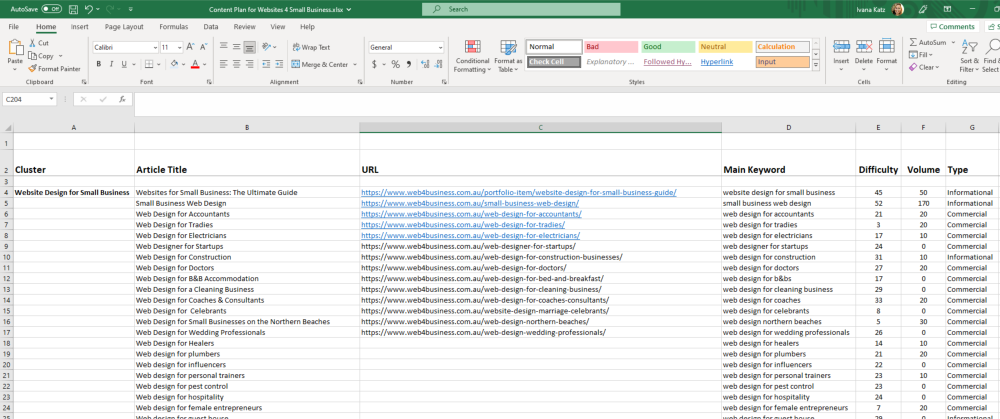
Assess the quality of each content item:
Assessing the quality of each content item is an essential part of a content audit. It helps you identify which pieces of content are working well, which ones need improvement, and which ones are no longer relevant. Here are the steps to follow when assessing the quality of each content item:
Check for accuracy
Make sure that the information in each content item is correct and up-to-date. You can use tools like Grammarly or Hemingway to check for spelling and grammar errors.
Check for relevance
Determine if each content item is still relevant to your target audience. Does it still address their pain points and needs? Is the topic still trending and important to your audience? You can use tools like Google Trends to find out what people are searching for.
Check for engagement
Look at the engagement metrics of each content item. How many views, shares, and comments does it have? Use tools like Google Analytics or BuzzSumo to gather this information.
Check for readability
Ensure that each content item is easy to read and understand. You can use tools like Readable to check the readability score of each content item.
Check for value
Determine if each content item provides value to your target audience. Does it solve a problem or answer a question for them? Is it entertaining or informative? If not, consider revising or removing it.
Analyze website metrics
Analyzing website metrics helps you identify which content items are resonating with your audience and which ones are not performing well. Here are some steps you can follow when analyzing website metrics:
Use Google Analytics
Google Analytics is a free tool that provides valuable insights into your website’s traffic, user behavior, and conversion rates. You can use it to track the performance of each content item and identify which ones are attracting the most traffic and engagement.
Analyze bounce rates
Bounce rate is the percentage of visitors who leave your website after viewing only one page. A high bounce rate can indicate that your content is not engaging or relevant to your audience. Use Google Analytics to identify which content items have high bounce rates and consider revising or deleting them.
Monitor user behaviour
User behaviour analytics provide insight into how visitors interact with your website. You can use tools like Crazy Egg or Hotjar to track user behavior, such as where they click, how long they stay on each page, and which content items they engage with the most.
Identify popular content
Use Google Analytics to identify which content items are attracting the most traffic and engagement. This can help you identify topics that are popular with your audience and create more content around those topics.
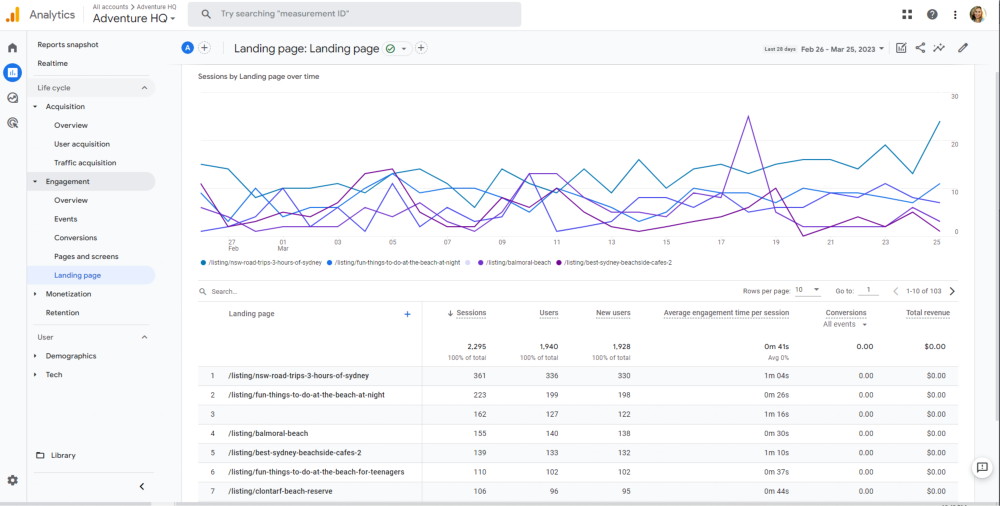
Monitor conversion rates
Conversion rate is the percentage of visitors who take a desired action on your website, such as making a purchase or filling out a form. Use Google Analytics to identify which content items are driving conversions and which ones need improvement.
Identify gaps and opportunities
Identifying gaps and opportunities in your content can help improve your website’s performance, attract new visitors, and engage your target audience. Here are steps you can follow:
Conduct a competitive analysis
Research your competitors to see what type of content they are creating and how it is performing. This can help you identify gaps in your own content and find opportunities to differentiate your website. Use tools like SEMrush or Ahrefs to analyze your competitors’ content and performance.
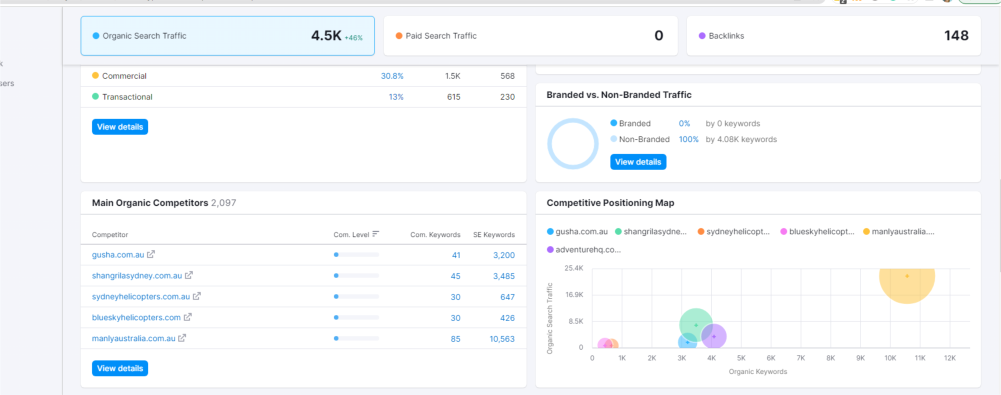
Use keyword research
Keyword research is an important tool for identifying gaps in your website’s content. It helps you identify what topics your audience is searching for and what questions they need answers to. Use tools like Google Keyword Planner or Moz Keyword Explorer to find relevant keywords and topics.
Analyze social media
Social media platforms can provide valuable insights into what your target audience is interested in. Analyze your social media profiles and posts to see which content items are getting the most engagement and shares. Use tools like Hootsuite or Buffer to track social media metrics.
Conduct a survey
Ask your audience what type of content they would like to see more of on your website. This can help you identify gaps in your current content and find opportunities to create new content that meets their needs. Use tools like SurveyMonkey or Google Forms to create and distribute surveys.
Use website analytics
Analyze your website’s performance metrics to identify gaps and opportunities. Look for content items that are not performing well and consider updating or deleting them. Use tools like Google Analytics or Kissmetrics to track your website’s performance metrics.
Create an action plan
Based on the audit results, create an action plan to address the identified gaps and opportunities. This may involve updating or deleting outdated content, creating new content to fill gaps, or improving the website’s navigation.
Analyze the Audit Results
Analyzing the audit results is crucial to make informed decisions about the website’s content. Here are some examples of what the audit results may reveal:
Outdated content
The audit may reveal that some of the website’s content is outdated and needs to be updated or deleted. For example, a business may have a page on its website promoting a product that is no longer available.
Duplicate content
The audit may reveal that the website has duplicate content, which can hurt the website’s SEO. For example, a business may have two pages with the same content but different URLs.
Missing content
The audit may reveal gaps in the website’s content that need to be filled. For example, a business may not have any content on its website about a new product it recently launched.
Poorly performing content
The audit may reveal that some of the website’s content is not performing well and needs to be improved or deleted. For example, a blog post may have a high bounce rate, indicating that it is not engaging to visitors.
Opportunities for improvement
The audit may reveal opportunities to improve the website’s content and user experience. For example, the audit may reveal that visitors are frequently searching for a particular topic on the website, but the website does not have any content on that topic.
Rewrite the Content
Importance of Rewriting the Content
Rewriting content allows you to improve the quality of your website’s content and ensure that it is relevant, engaging, and informative for your target audience.
By rewriting content that is outdated, inaccurate, or poorly written, you can improve your website’s search engine rankings, increase user engagement, and ultimately drive more conversions.
Tips on How to Rewrite the Content
Here are some tips to help you effectively rewrite your website’s content:
Use your audit findings
Use the results of your content audit to identify areas where content needs to be rewritten. Look for pages with high bounce rates, low engagement, or outdated information, and prioritize these for rewriting.
Keep your target audience in mind
When rewriting content, make sure to keep your target audience in mind. Use language that resonates with them and focuses on their needs and interests.
Make it scannable
Most website visitors don’t read every word on a page, so make your content scannable by using headings, subheadings, bullet points, and short paragraphs.
Incorporate keywords
Incorporate relevant keywords into your content to improve your search engine rankings, but make sure to use them naturally and not to overstuff.
Use a clear and concise writing style
Write in a clear and concise style that is easy to understand. Avoid jargon, technical terms, or overly complicated sentences.
Best Practices to Ensure Quality Content
Here are some best practices to ensure that your rewritten content is high-quality and effective:
Edit and proofread carefully:
Edit and proofread your rewritten content carefully to ensure that it is free of errors, typos, and grammatical mistakes.
Use visuals to enhance your content:
Use visuals like images, videos, or infographics to enhance your content and make it more engaging for your audience.
Optimize for SEO:
Make sure to optimize your rewritten content for search engines by using relevant keywords, meta descriptions, and other SEO best practices.
Test and track your results:
Test your rewritten content by monitoring its performance and tracking user behaviour. Use this data to make further improvements and tweaks as needed.
Optimize the Content for SEO
Why SEO is Important
Search engine optimization (SEO) is the practice of optimizing your website’s content to rank higher in search engine results pages (SERPs) for specific keywords and phrases. Optimizing your content for SEO is important because it helps your website appear higher in search results, which can drive more organic traffic and increase your visibility online.
Tips on How to Optimize the Content for SEO
Here are some tips to help you optimize your website’s content for SEO:
Use relevant keywords
Use relevant keywords in your content, including in the title, headers, and body text. Use keyword research tools like Google Keyword Planner, SEMrush, or Ahrefs to find the best keywords for your content.
Optimize meta descriptions
Meta descriptions are short summaries of your content that appear in search results. Make sure to optimize your meta descriptions with relevant keywords and a compelling call to action.
Use descriptive URLs
Use descriptive URLs that include relevant keywords to help search engines understand what your content is about.
Use internal and external links
Use internal links to other pages on your website and external links to other authoritative websites to improve the user experience and increase your website’s authority.
Optimize images
Optimize your images by using descriptive file names, alt tags, and captions to help search engines understand what the image is about.
Best Practices for SEO Optimization
Here are some best practices to ensure that your content is effectively optimized for SEO:
Focus on quality content
Make sure your content is high-quality, informative, and engaging. This will help you build authority and drive more traffic to your website.
Monitor your analytics
Use analytics tools like Google Analytics or SEMrush to monitor your website’s traffic, user behaviour, and other metrics. Use this data to identify areas for improvement and to track the success of your SEO efforts.
Avoid keyword stuffing
Avoid overusing keywords in your content, as this can result in penalties from search engines.
Keep up with the latest SEO trends
Stay up to date with the latest SEO trends and best practices to ensure that your content remains effective and relevant.
Use SEO tools
Use SEO tools like Yoast SEO, Moz, or Ahrefs to help you optimize your content and monitor your website’s SEO performance.
Final Steps
A website that has gone through a content audit and content rewrite can provide significant benefits, but before it goes live, there are final steps that must be taken to ensure it is ready for publication. These steps include proofreading the content and testing the website.
Proofread the Content
Proofreading is a crucial step in ensuring the quality of website content. This step ensures that the content is free from spelling and grammatical errors and is consistent in terms of tone and voice. It is essential to proofread the content to make sure that the website appears professional and credible to visitors. A website with numerous spelling errors or poor grammar can give the impression that the site is not trustworthy.
One tip for proofreading is to take a break between writing and editing. This break can allow the writer to review the content with fresh eyes and catch any errors that were previously missed.
Another tip is to read the content aloud. Reading aloud helps to identify awkward phrasing, sentence structure, or word choices that may have been missed during the initial writing or editing process.
Using proofreading tools such as Grammarly, Hemingway, or ProWritingAid can also help writers identify and correct errors in their writing.
Test the website after the rewrite
After the content has been rewritten and proofread, it is essential to test the website before it goes live. Testing the website involves checking that all links are working, images and videos are loading correctly, and the website is responsive and displays correctly on all devices.
Testing the website is important to ensure that visitors have a positive user experience and to avoid any potential technical issues that may arise.
One tool that can be used for website testing is Google’s PageSpeed Insights. This tool analyzes a website’s load time and provides suggestions on how to improve its performance.
Another tool is GTmetrix, which provides a detailed analysis of a website’s performance, including page speed, loading time, and page size.
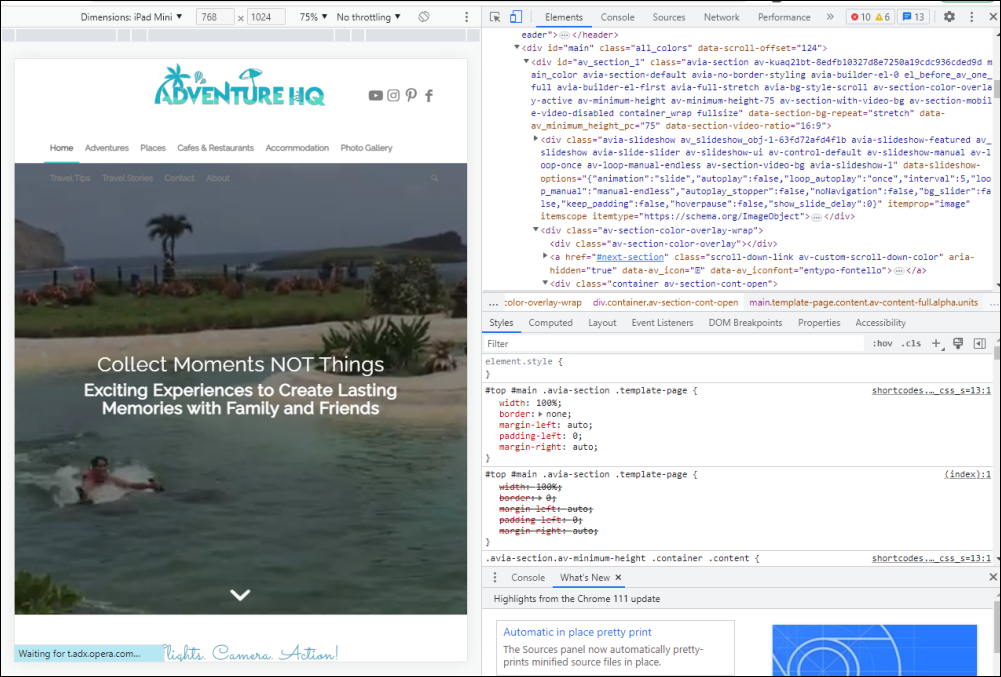
Rewriting website content is a crucial step in ensuring that your website provides value to your target audience and ranks well in search engine results. By identifying the purpose of your website, knowing your target audience, and performing a content audit, you can identify gaps and opportunities for improvement.
Frequently Asked Questions about Rewriting Website Content
Why should I consider rewriting content for my business?
There are several reasons why you should consider rewriting content for your business:
- To improve SEO: Rewriting content can help to optimize your website for search engines, making it easier for customers to find your website when they search for keywords related to your business.
- To update information: If the information on your website is outdated or inaccurate, it can harm your credibility and make customers less likely to do business with you. Rewriting content can help to ensure that your website is up-to-date and provides accurate information.
- To improve readability: If your content is difficult to read or understand, customers may become frustrated and leave your website. Rewriting content can help to make your content more accessible and engaging, which can help to keep customers on your website for longer.
- To differentiate your business: If your website has similar content to your competitors, it can be difficult to stand out from the crowd. Rewriting content can help to differentiate your business and make it more unique, which can help to attract new customers.
- To improve conversions: If your website’s content is not compelling, it can make it difficult to convert visitors into customers. Rewriting content can help to make your website more persuasive and encourage visitors to take action, such as making a purchase or filling out a contact form.
What types of content should I consider rewriting?
There are several types of content that you may want to consider rewriting for your business:
- Website pages: Your website’s main pages, such as the homepage, about us page, and services page, should be well-written, engaging, and informative. If these pages are outdated, poorly written, or do not accurately reflect your brand or services, you may want to consider rewriting them.
- Blog posts: Blogging is a great way to attract visitors to your website, but if your blog posts are not well-written or informative, they may not be effective. Consider rewriting your blog posts to ensure that they are engaging, informative, and relevant to your target audience.
- Product descriptions: If you sell products on your website, it’s important to have clear and compelling product descriptions that accurately describe the benefits of your products. If your product descriptions are not effective or do not accurately reflect the benefits of your products, consider rewriting them.
- Marketing materials: Your marketing materials, such as brochures, flyers, and advertisements, should be persuasive and compelling. If your marketing materials are not effective in attracting new customers or promoting your brand, consider rewriting them.
- Social media posts: Social media is an important part of any business’s marketing strategy, but if your social media posts are not engaging or relevant to your target audience, they may not be effective. Consider rewriting your social media posts to ensure that they are compelling, informative, and relevant to your followers.
How do I know if my existing content needs to be rewritten?
There are several signs that your existing content may need to be rewritten:
- Outdated information: If your content contains outdated information that is no longer accurate or relevant, it may need to be rewritten to reflect current trends and developments.
- Poor engagement: If your content is not engaging or fails to hold the reader’s attention, it may need to be rewritten to be more compelling and interesting.
- Low search engine rankings: If your content is not ranking well in search engines, it may need to be rewritten to optimize it for relevant keywords and improve its search engine visibility.
- Inconsistent tone or style: If your content is written in an inconsistent tone or style, it may need to be rewritten to ensure that it reflects your brand voice and is consistent with your overall marketing message.
- Ineffective marketing: If your content is not effectively promoting your products or services, it may need to be rewritten to better highlight your unique selling points and value proposition.
- Negative feedback: If you receive negative feedback from customers or readers about your content, it may need to be rewritten to address their concerns and improve their experience.
How much time and resources will be required for content rewriting?
The amount of time and resources required for content rewriting can vary depending on the size and complexity of your website, as well as the extent of the changes needed. Here are some factors that can affect the time and resources required for content rewriting:
- Size of the website: Larger websites will generally require more time and resources to rewrite content than smaller websites.
- Amount of content to be rewritten: The more content that needs to be rewritten, the more time and resources it will require.
- Complexity of the content: Technical or highly specialized content may require additional research or expertise, which can increase the time and resources needed for rewriting.
- Number of writers involved: If you are working with multiple writers to rewrite your content, it may require more time to coordinate and review their work.
- Review and approval process: The time required for reviewing and approving rewritten content can also affect the overall timeline and resources needed.
Overall, the time and resources required for content rewriting will depend on the specific needs of your business and website. It’s important to allocate enough time and resources to ensure that the content is rewritten to a high standard that effectively reflects your brand and engages your target audience.
What are the best practices for content rewriting?
Here are some best practices to follow when rewriting content:
- Start with a content audit: Before you begin rewriting content, conduct a content audit to identify which pages or sections of your website need to be updated. This will help you prioritize your efforts and ensure that you focus on the most important content first.
- Identify your target audience: Understanding your target audience is key to creating effective content. When rewriting content, make sure to keep your audience in mind and tailor the content to their needs and interests.
- Clarify the purpose and message: Make sure that the purpose and message of each piece of content is clear and easy to understand. Focus on communicating your key message in a concise and compelling way.
- Optimize for search engines: Rewriting content is a great opportunity to optimize your website for search engines. Use relevant keywords and meta descriptions to improve your website’s visibility and attract more organic traffic.
- Simplify the language: Use simple and clear language that is easy to understand. Avoid technical jargon or complex language that may confuse or alienate your audience.
- Use formatting to improve readability: Use headings, bullet points, and other formatting techniques to improve the readability of your content. This can help break up long blocks of text and make the content easier to scan.
- Proofread and edit: Finally, make sure to proofread and edit your content carefully before publishing. This will help ensure that the content is error-free and effectively communicates your message to your audience.
How do I ensure that the new content is better than the original?
- Analyze the original content: Start by analyzing the strengths and weaknesses of the original content. Identify what worked well and what didn’t, and use this information to guide your rewriting efforts.
- Identify the key message: Make sure that the key message of the original content is still present in the rewritten content. If the message is unclear or buried in the original content, take the opportunity to clarify and re-emphasize it in the new content.
- Address any gaps or weaknesses: Identify any gaps or weaknesses in the original content and make sure that they are addressed in the rewritten content. This could involve adding new information, clarifying existing information, or providing additional context.
- Improve readability and organization: Use formatting techniques to improve the readability and organization of the new content. This could involve using headings, bullet points, or other formatting elements to make the content more visually appealing and easier to scan.
- Incorporate feedback: If you have received feedback on the original content, use this feedback to improve the new content. Incorporate any suggestions or criticisms into the new content to make it stronger and more effective.
- Consider the target audience: Make sure that the new content is tailored to your target audience. Use language, tone, and style that resonates with your audience and addresses their needs and interests.
How do I measure the effectiveness of rewritten content?
To measure the effectiveness of rewritten content, here are some key metrics and tools that you can use:
- Traffic: One of the most basic metrics to track is website traffic. Analyze website traffic using tools like Google Analytics to see if there has been an increase in traffic to the pages that have been rewritten.
- Engagement: Another metric to track is engagement. This includes metrics like time spent on the page, bounce rate, and page views per session. Analyze these metrics to see if visitors are engaging with the content and staying on the page longer.
- Conversions: Conversions are another important metric to track. This includes metrics like lead generation, sales, and sign-ups. Analyze these metrics to see if the rewritten content is driving more conversions.
- Search engine rankings: Analyze search engine rankings to see if the rewritten content is ranking higher for relevant keywords. This can be tracked using tools like SEMrush or Ahrefs.
- Feedback: Ask for feedback from your audience to see if the rewritten content is resonating with them. This could include feedback from surveys, comments, or social media.
What are the potential risks associated with content rewriting, and how can I mitigate them?
There are potential risks associated with content rewriting that you should be aware of, and here are some ways to mitigate them:
- Losing the original message: When rewriting content, it’s important to ensure that the original message is not lost. You can mitigate this risk by creating a detailed outline or plan before beginning the rewriting process to ensure that the original message is preserved.
- Changing the tone: Rewriting content can also change the tone and style of the original content. To mitigate this risk, consider working with a professional copywriter who can maintain the tone and style of the original content while improving it.
- Losing SEO rankings: When you rewrite content, you may inadvertently change the SEO value of the original content. To mitigate this risk, analyze the SEO value of the original content before rewriting it. Make sure that the rewritten content is optimized for the same keywords and includes the same headings, meta descriptions, and other SEO elements.
- Time and resources: Rewriting content can be a time-consuming and resource-intensive process. To mitigate this risk, create a plan that outlines the scope of the rewriting project and sets realistic deadlines and expectations.
- Copyright issues: When rewriting content, you must be careful not to violate copyright laws. To mitigate this risk, make sure that you have permission to use the original content or that the content is in the public domain.
Rewriting website content is a crucial step in ensuring that your website provides value to your target audience and ranks well in search engine results. By identifying the purpose of your website, knowing your target audience, and performing a content audit, you can identify gaps and opportunities for improvement.
 Ivana Katz from Websites 4 Small Business is an award winning web designer who builds websites that build your business. She provides unbeatable web design services to fit your budget.
Ivana Katz from Websites 4 Small Business is an award winning web designer who builds websites that build your business. She provides unbeatable web design services to fit your budget.
The end result? Professional, custom-made sites that give your business the extra oomph it needs to stand out from the competition and make an impact.
Whether you’re a brand-new business or an established one ready to improve your digital presence, Ivana makes it easy to get your business online very quickly. Her websites are professional, tailored to fit your budget, and give your business a serious boost.
Download your FREE copy of “Ultimate Website Design Secrets Blackbook – 10 Bulletproof Strategies for Designing an Outrageously Successful Website”







